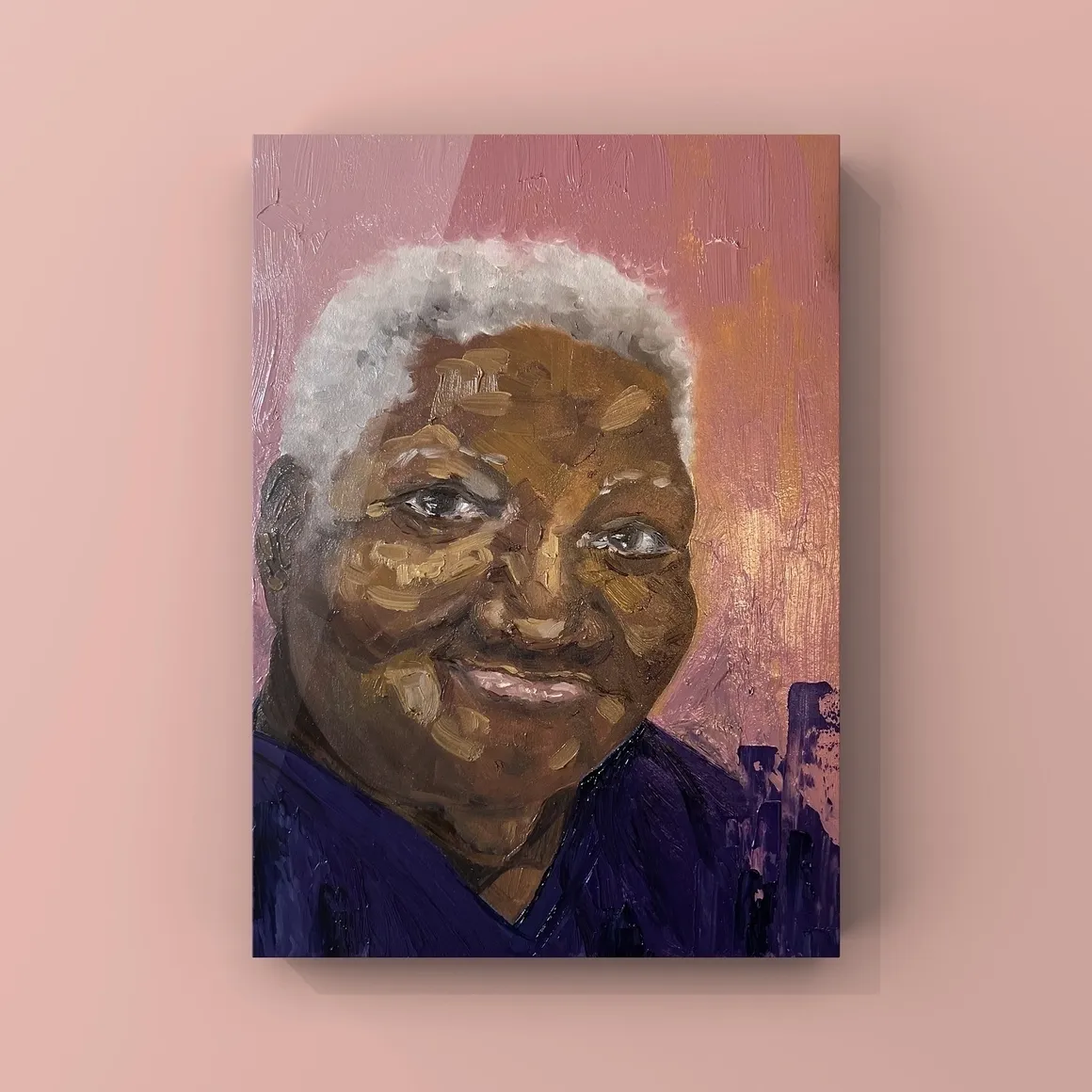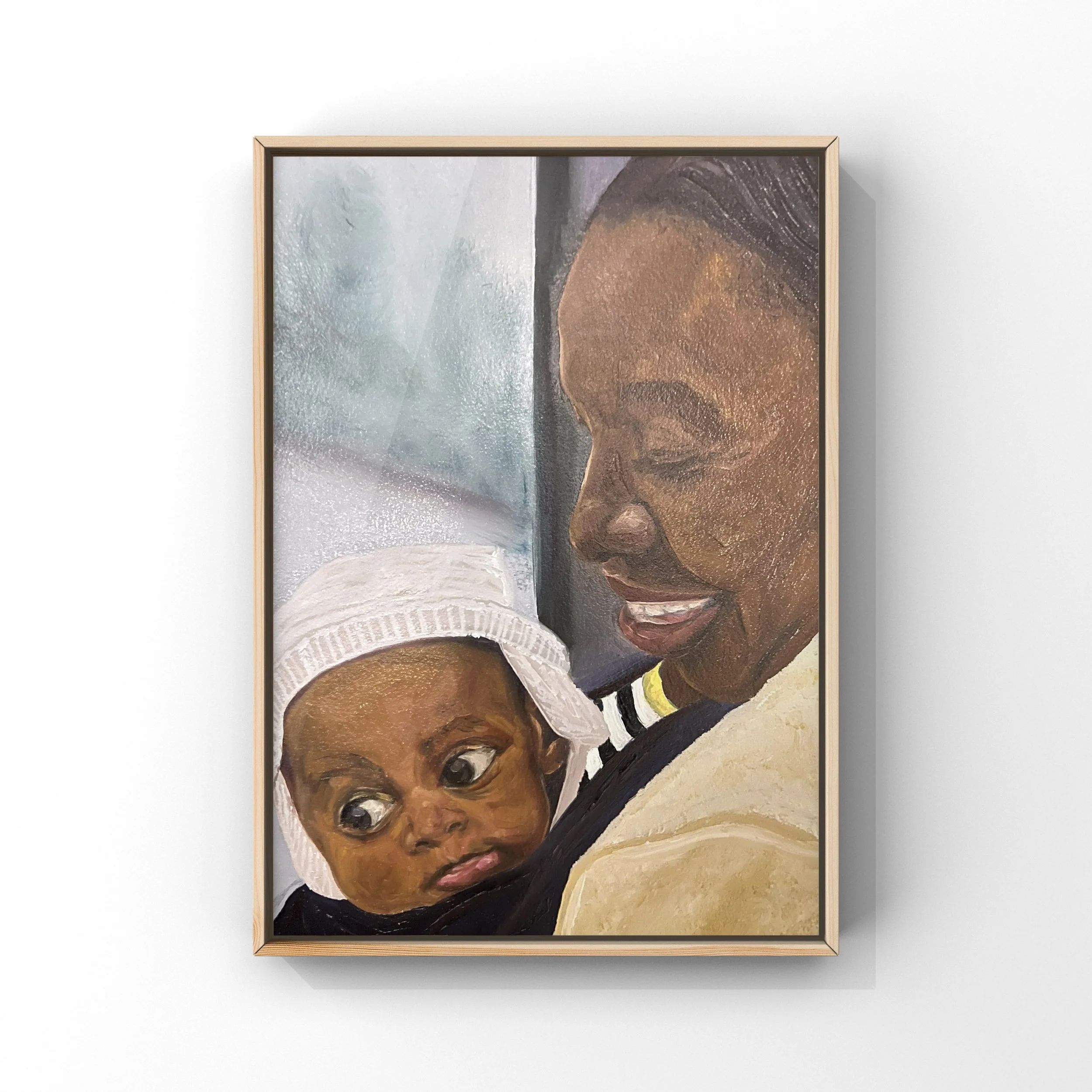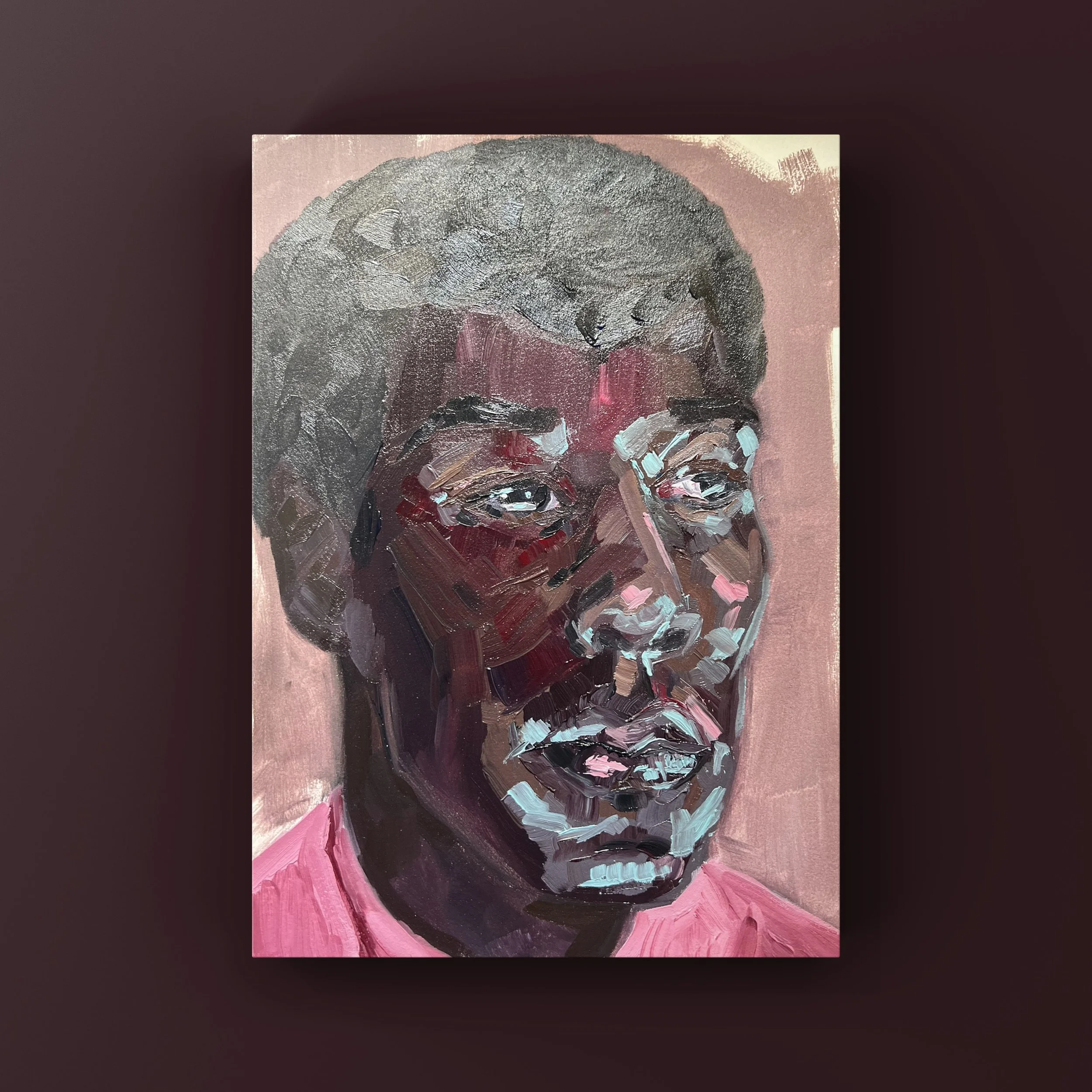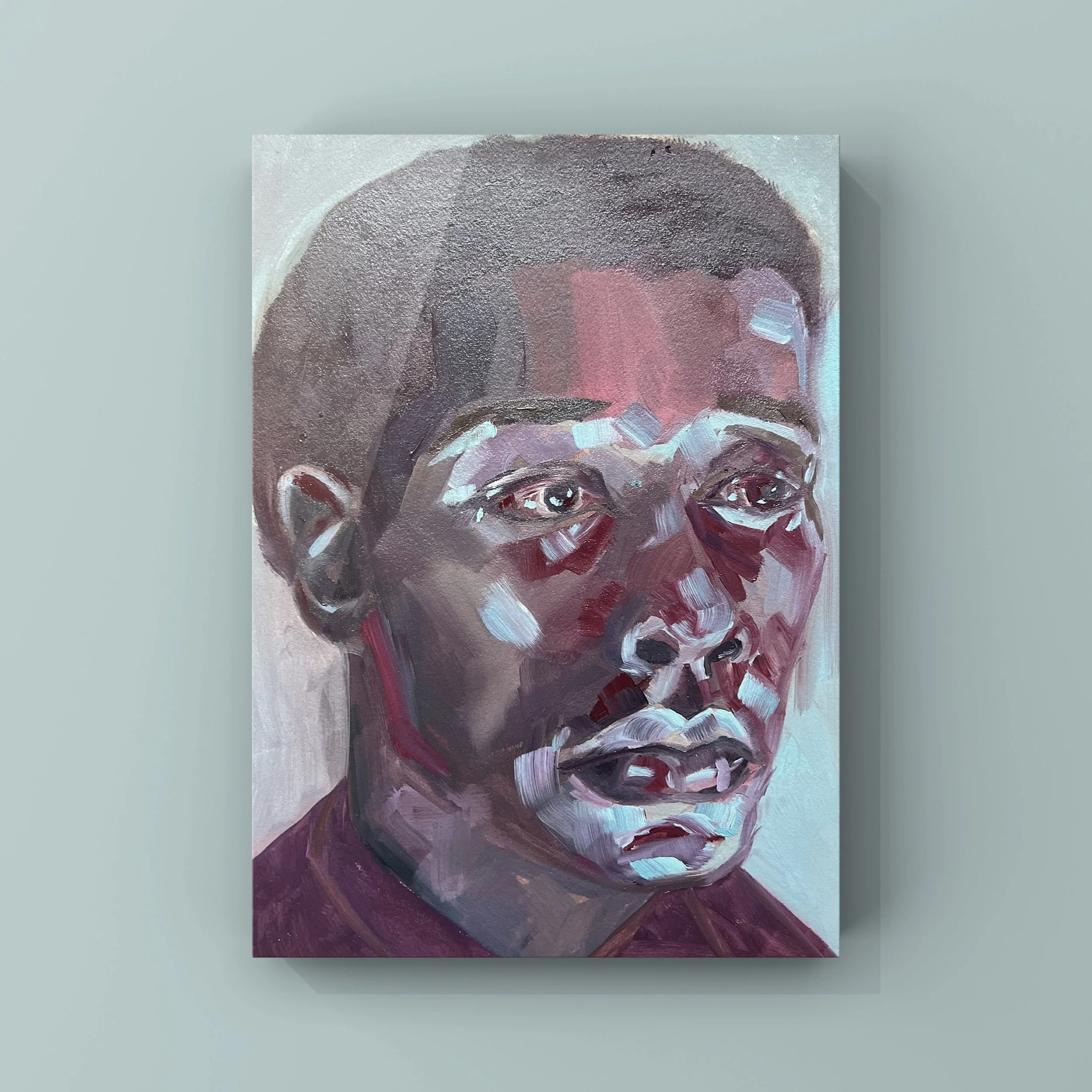Artist spotlight : tiffany wint
Tiffany Wint is a multidisciplinary artist whose work speaks to the quiet complexities of being human. Her paintings are intimate, emotive, and unapologetically personal—formed not just through technique, but through lived experience, emotional honesty, and the belief that art can reveal truths where language can sometimes fail. — discover more at www.tiffanywint.com
What initially inspired you to become an artist, and how did you develop your unique style?
From as early as I can remember, creativity has been at the core of who I am. I grew up in a family where the women were all dressmakers, and my dad was always putting ideas to paper. It’s no surprise I’ve got this unshakable drive to create. I’ve always had this internal dialogue compelling me to make things, especially when I see something I love but don’t want to pay for! That’s how I ended up transforming an old ottoman into a Chesterfield-style piece, with zero experience—just the desire to reinvent something forgotten into something beautiful. I love that feeling of taking the raw and the worn and breathing new life into it.
But when it comes to painting, that’s where I really find my freedom. Painting is the only time my brain actually quiets down. It’s where I can lose myself, where time doesn’t exist, and I can just be. My work doesn’t follow a formula—it’s instinctive, driven by whatever emotion or thought is alive in me that day. Some days I crave the details—the precision of a carefully crafted line. Other days, it’s all about that raw, unfiltered release, where I throw myself into thick, textured strokes that don’t feel the need to be perfect - simply true to what I’m feeling. There’s something so freeing about leaving marks that don’t have to be “finished” or smooth. I want people to feel the energy in the paint, not just see it. Painting is my sanctuary - and most fun when untamed, ever-evolving, and full of discovery. I can’t stand the idea of painting for trends or to sell. Art, for me, isn’t about fitting into someone else’s mould—it’s about using the canvas to communicate what words can’t. It’s my personal catharsis and a vital form of self expression. One day I might paint with a delicate hand, the next it’s all chaos and instinct. But it’s always real, always me. I never want to lose that, because as soon as painting becomes a chore, as soon as it’s not about expression, it’s not worth doing at all.

Collaboration in the art world can often lead to innovative outcomes. Have you ever collaborated with other artists or creative individuals, and if so, how did these collaborations influence your artistic practice?
I haven’t yet collaborated with other artists in the traditional sense, but I can definitely see myself exploring that in the future. I did have an interesting experience with Athena Anastasiou, though, which felt like a kind of collaboration in its own way. She gave me an aluminium panel some time ago, which I’ve recently started painting on, and that gesture alone felt like an invitation to explore new possibilities.
During a conversation we had, I opened up about how perfectionism was holding back my practice, and Athena shared some incredibly wise advice that’s had a lasting impact on me. She told me to, “Treat your canvas like your sketchpad.”This simple but powerful phrase encouraged me to paint more intuitively, focusing on feeling and expression rather than striving for technical perfection. It was a liberating shift, allowing me to create without self-imposed restrictions. While I still find myself getting in my head at times, her words have definitely helped me embrace a more open, fluid approach to my art, and that’s something I carry with me now.
Can you share a specific piece of artwork that holds special significance to you?
One piece that holds special significance to me is a painting I created years ago called "In My Feelings." I painted it over the course of two days during a time when I was feeling completely overwhelmed with emotion. The feelings were so intense that painting became my only means of expressing what I couldn’t put into words. It was a cathartic release, a form of therapy that allowed me to process everything I was going through. And I am grateful beyond words — to them, and also to myself, for creating that space of trust.
Looking back on it now, having healed from the emotions I was grappling with at the time; the painting still serves as a powerful reminder of how essential my practice is to me, especially in terms of mental health. It reminds me of the role art plays in my life as both a release and a way to understand myself better. It’s a piece that helped me heal, and continues to do so, every time I see it.
How do you feel about exhibiting your artworks with The Holy Art Gallery?
When the opportunity to exhibit with The Holy Art Gallery came up, I was thrilled to share my work with a wider audience and engage with people about my creative process. At the same time, I felt nervous—I’ve always been someone who shied away from showing my work, especially if it wasn’t "finished" or I didn’t feel it was good enough. Exhibiting was a big step for me, a way to push past those insecurities and get out of my comfort zone. It was a chance to put myself out there, connect with others in the space, and grow as an artist.
Looking ahead, what are your long-term goals and aspirations as an artist, and how do you plan to achieve them?
Looking ahead, my long-term goal is to become a full-time artist, fully immersed in my creative practice and able to dedicate myself entirely to my work. I also aspire to inspire others, especially those who may not see themselves represented in the art world. As a Black woman, I want to contribute to improving representation in the arts, helping to create space for more diverse voices to be heard and celebrated.
I’m driven by the desire to connect with a global community—artists, collectors, and art lovers— through the stories my work tell and the conversations it sparks. My goal is to create art that not only resonates on a personal level but also fosters a deeper understanding of our shared humanity. I want my work to inspire growth, provoke thought, and bring people together across cultures and backgrounds. To achieve this, I plan to continue challenging myself as an artist, stepping out of my comfort zone, and embracing opportunities for collaboration and exhibition. By staying true to my vision and pushing the boundaries of my creative expression, I aim to build meaningful connections and have a positive impact in the world.
How do you incorporate feedback from critics and audiences into your artistic practice, and how do you balance this feedback with your own artistic intuition?
I see feedback, whether positive or negative, as just another perspective shaped by personal experience. I’m open to it, as it can often offer new insights or reveal things I may not have noticed. That said, I will often reflect on how it aligns with my vision before incorporating it. If it feels authentic and constructive, I’ll consider it, but if it doesn’t resonate with my artistic vision, I choose to let it go. Ultimately, I trust my own instincts while remaining open to others' ideas, striking a balance that helps me grow without losing my artistic direction.






